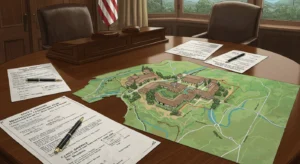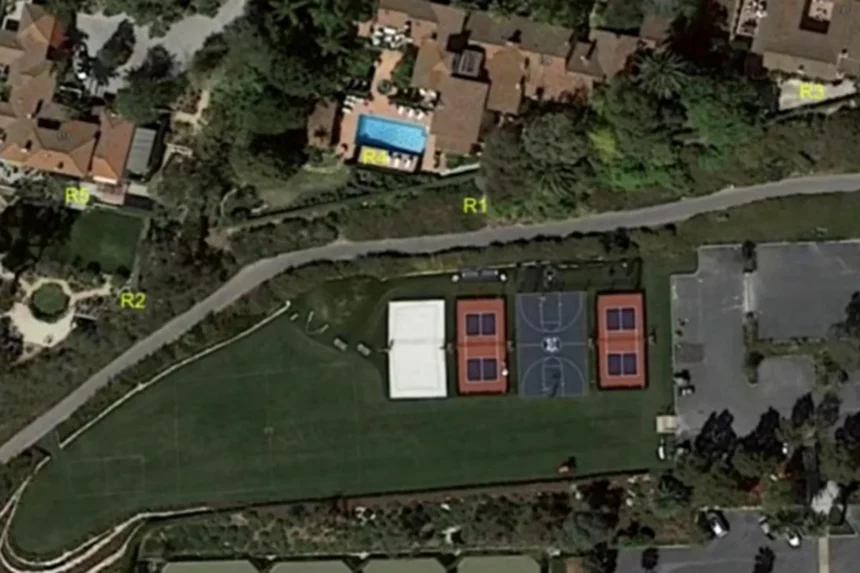Easement Montecito Country Club Easement Dispute are a common yet often deeply contentious issue in property law. They involve navigating the delicate intersection of property rights, shared responsibilities, and interpersonal dynamics.
Few cases illustrate these complexities more starkly than the Montecito Country Club easement dispute. This legal battle serves as both a cautionary tale and an opportunity for education on managing shared resources effectively.
elow, we’ll explore the details of the case, the court’s ruling, and the broader implications for property owners dealing with easements.
The Conflict
At the heart of the Montecito Country Club Easement Dispute was an easement owned by the Montecito Country Club, which spans an area used for cart paths and maintenance purposes. Kevin and Jeannette Root, property owners adjacent to the Country Club, took it upon themselves to re-landscape and develop a portion of this easement. Their landscaping efforts included the installation of hedges, a retaining wall, and soil re-grading. While these modifications were intended to improve the usability and aesthetics of their adjacent property, they encroached on the Club’s legal rights over the easement.
The roots of the conflict lay in the fact that the Roots proceeded with these changes without obtaining permission from the Montecito Country Club or its owner, Ty Warner. Despite being explicitly informed by the Club’s management that alterations to the easement were not allowed, the Roots carried on with their plans.
From the Club’s perspective, these changes created significant obstacles to future usage of the easement for greenskeeping and cart paths. The Club argued that its legal right to use the easement had been unreasonably interfered with, prompting it to take legal action.
The Court’s Decision
The case, titled Montecito Country Club, LLC vs. Kevin Root, et al., was presented in the Santa Barbara Superior Court. After deliberations, Judge Donna Geck ruled in favor of Montecito Country Club. The court found that the Roots’ alterations to the easement were unlawful and issued a mandatory injunction requiring that the property be restored to its original state.
Key Rulings
-
Validation of the Easement
The court confirmed that the easement was legally valid. This reaffirmed the Club’s ongoing rights to use the property for cart paths and other purposes as stipulated in the original agreement. -
Restoration Costs
The Roots were ordered to bear the cost of removing all their unauthorized modifications and restoring the area to its previous condition. -
Court Jurisdiction
The court announced that it would retain jurisdiction to monitor the restoration work until the alterations were completely removed and the property restored.
This ruling underscores a crucial aspect of property law: easements are binding agreements that cannot be disregarded without consequences.
Broader Lessons for Property Owners Montecito Country Club Easement Dispute

The Montecito Country Club easement Montecito Country Club Easement Dispute is not just about borders, hedges, and cart paths. It provides a window into how shared property arrangements can devolve into legal battles and underscores the fundamental importance of clear communication and strict adherence to legal agreements. Here are some key takeaways from the case.
1. The Power of Legal Documentation
Easements are legal agreements that define how one party can use another party’s property. These agreements are binding and override any informal arrangements or verbal discussions. Property owners must be aware of the terms of any easements on their land and ensure compliance. Ignorance of the agreement or presumption of authority in modifying the land is not a defense in court, as this case demonstrated.
2. Importance of Communication
Many Montecito Country Club Easement Dispute can be avoided through clear communication. If the Roots had discussed their landscaping plans with Ty Warner and the management of Montecito Country Club, this conflict might have been resolved amicably. Instead, unilateral decision-making led to a costly legal battle.
Easement agreements often involve multiple parties with potentially diverging interests. Transparent discussions play a crucial role in maintaining harmony and avoiding conflict.
3. The Perils of Assumptions Montecito Country Club Easement Dispute
A recurring issue in easement Montecito Country Club Easement Disputeis the assumption by one party that their needs take precedence. Property owners often forget that easements are legal rights bestowed for the benefit of the dominant estate—in this case, the Montecito Country Club. Any unilateral action that impacts the easement’s intended use can have significant legal ramifications.
Practical Advice for Avoiding Easement Disputes
If you are a property owner dealing with shared resources, there are steps you can take to avoid legal conflicts like the Montecito Country Club case.
1. Understand Your Easement Agreements
Before making any changes to your property, familiarize yourself with any pre-existing easement agreements. What rights does the easement grant to others? Are there limitations or conditions for use? Knowing these details is critical.
2. Work Collaboratively with Neighbors
Establish strong communication channels with neighboring property owners. Inform them of any planned changes that may impact shared property and seek their input before proceeding. A collaborative approach can go a long way in maintaining good relations and avoiding Montecito Country Club Easement Dispute.
3. Consult Legal Expertise
If you’re unclear about your rights or the implications of a proposed change, consult an attorney experienced in property law. Legal guidance can help you avoid inadvertently violating an easement or escalating a minor disagreement into a major legal battle.
4. Practice Maintenance and Monitoring
Pay attention to shared areas and ensure they are maintained regularly. For example, if your easement involves a shared driveway, discuss maintenance responsibilities with neighbors and ensure all parties contribute fairly.
5. Document Everything
Any modifications, agreements, or discussions regarding easements should be thoroughly documented. This includes emails, formal letters, and updated property records. Written documentation can serve as critical evidence if Montecito Country Club Easement Dispute arise.
6. Consider Mediation Before Litigation
If disagreements occur, try mediation before resorting to legal action. Mediation is often faster, less expensive, and less contentious than going to court. A mediator can help both parties see the bigger picture and reach a mutually acceptable solution.
Easements in the Bigger Picture
The Montecito Country Club easement Montecito Country Club Easement Dispute illustrates how shared property rights can become flashpoints for conflict if not managed carefully. However, it also highlights an important truth about property ownership in modern society—that collaboration and mutual respect are often as important as legal entitlements.
Easements may seem like dry legal constructs, but they represent real-world relationships between neighbors. Approaching these arrangements with a clear head, respect for legal terms, and a commitment to open dialogue can transform a potential source of conflict into a tool for community-building and shared prosperity.
Final Thoughts
The Montecito Country Club easement Montecito Country Club Easement Dispute is a powerful reminder of what can go wrong when property rights are disregarded. Yet, it also serves as a teachable moment for all property owners about the value of respecting legal agreements and fostering good neighborly relations.
To avoid similar Montecito Country Club Easement Dispute, property owners must take proactive steps to understand their rights and responsibilities, maintain open communication, and address potential issues before they escalate. By doing so, they can help ensure that shared resources are a source of convenience and cooperation rather than conflict.





